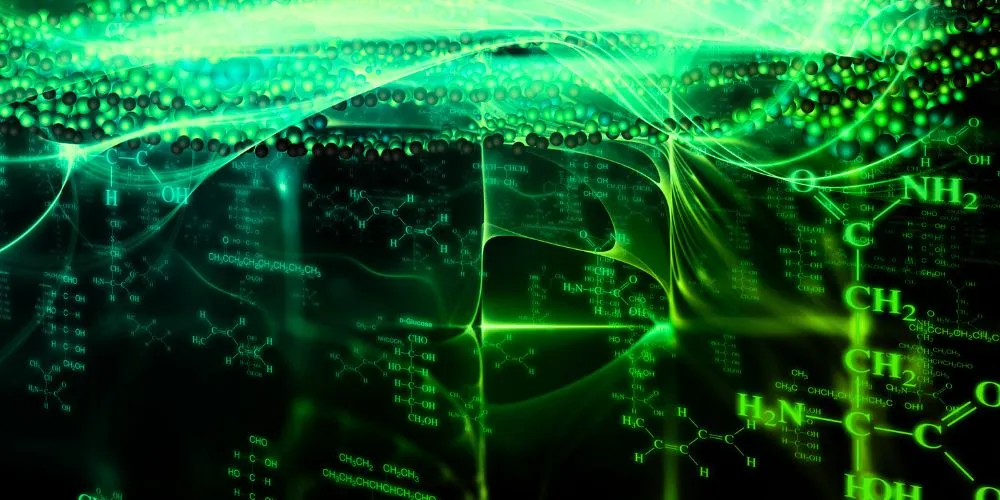Green chemistry, also known as sustainable chemistry, is a scientific approach that focuses on designing and developing chemical products and processes that minimize their environmental impact while maximizing efficiency and safety. This article will explore green chemistry principles, significance, applications, and role in shaping a more sustainable and environmentally friendly future.
Principles of Green Chemistry
Green chemistry is guided by principles that promote the development of environmentally responsible practices in chemistry.
Prevention
The primary goal of green chemistry is to prevent pollution at its source rather than managing it after it has been created. This involves designing processes that generate fewer hazardous substances and waste products. Prevention is a core principle that emphasizes the importance of proactive measures to reduce the environmental impact of chemical processes. Instead of dealing with pollution and waste after they have been generated, green chemistry seeks to prevent these issues from arising in the first place. This can be achieved by designing chemical processes that are inherently cleaner and produce fewer harmful byproducts.
Atom Economy
Efforts are made to maximize the incorporation of all materials used in a chemical process into the final product, reducing the generation of byproducts. Atom economy is a fundamental concept focusing on efficiently using atoms and molecules in chemical reactions. In traditional chemical processes, many reactants end up as waste products. It seeks to minimize this waste by designing reactions in which most starting materials are converted into the desired product. This not only reduces waste but also conserves valuable resources.
Less Hazardous Chemical Syntheses
Green chemistry seeks to develop methods that use less toxic and more environmentally friendly reagents and solvents. The less hazardous chemical syntheses principle underscores the importance of using safer chemicals for human health and the environment. It encourages the substitution of toxic and dangerous chemicals with less harmful alternatives. This reduces the risks associated with chemical processes and contributes to a healthier and more sustainable chemical industry.
Safer Chemical Design
Chemists aim to design fewer toxic chemicals for humans and the environment while maintaining their effectiveness. Safer chemical design is a key aspect, emphasizing the importance of considering the potential risks of chemical products. Green chemists work to design chemicals that have reduced toxicity, are biodegradable, and pose minimal environmental hazards. This ensures that the entire life cycle of a chemical, from production to disposal, is as environmentally friendly as possible.
Energy Efficiency
Efforts are made to develop chemical processes that require less energy and reduce the carbon footprint associated with chemical production. Energy efficiency is critical, as the chemical industry is a significant energy consumer. It seeks to minimize energy consumption in chemical processes by optimizing reaction conditions, using renewable energy sources, and designing energy-efficient equipment. This not only reduces greenhouse gas emissions but also lowers production costs.
Use of Renewable Feedstocks
Green chemistry promotes using renewable raw materials, such as biomass, that can be replenished rather than relying on finite fossil resources. The use of renewable feedstocks is aligned with the goal of sustainability. It encourages substituting fossil-based raw materials with renewable alternatives like plant-based biomass. This reduces the dependence on non-renewable resources and helps mitigate the environmental impact of their extraction and use.
Design for Degradation
Chemical products are designed to break down into non-toxic substances after they have fulfilled their intended purpose, reducing waste and environmental impact. It involves creating products with a built-in mechanism for breaking down into harmless substances at the end of their lifecycle. This ensures that products do not persist in the environment as pollutants and reduces the burden on waste management systems.
Real-time Analysis for Pollution Prevention
Monitoring and control mechanisms are integrated into chemical processes to detect and prevent the formation of hazardous substances. Real-time analysis for pollution prevention emphasizes the importance of continuous monitoring and control during chemical processes. Detecting and addressing potential issues as they arise aims to prevent the formation of hazardous substances and minimize environmental harm. This proactive approach enhances the safety and environmental performance of chemical processes.
Safer Solvents and Auxiliaries
Using safer solvents and processing aids is encouraged to minimize their environmental impact. Safer solvents and auxiliaries are crucial considerations. Traditional solvents and processing aids can harm human health and the environment. It promotes the use of less toxic alternatives with a reduced environmental footprint. This enhances the safety of chemical processes and reduces the release of harmful chemicals into the environment.
Inherently Safer Chemistry for Accident Prevention
Chemical processes are designed to be inherently safer to prevent accidents and minimize the risks associated with chemical production. Inherently safer chemistry is a proactive approach that seeks to eliminate or reduce hazards in chemical processes from the outset. Designing processes that are less prone to accidents and inherently safer minimizes the risks to workers, communities, and the environment. This contributes to a safer and more sustainable chemical industry.
The Significance of Green Chemistry
Green chemistry plays a pivotal role in addressing pressing environmental and sustainability challenges.
Environmental Protection
Reducing the use of hazardous chemicals and minimizing waste generation contributes significantly to environmental protection and the preservation of ecosystems. Adopting practices that reduce the release of harmful chemicals into the environment helps mitigate the impact of pollution on ecosystems and natural habitats. This contributes to the conservation of biodiversity and the planet’s long-term health.
Human Health
Developing less toxic chemicals and processes safeguards human health by reducing exposure to harmful substances in products and the environment. Human health is closely linked to the chemicals we encounter daily. It seeks to minimize the risks associated with exposure to toxic chemicals, whether in consumer products, workplaces, or the environment. It helps protect human health and well-being by designing safer chemicals and processes.
Resource Efficiency
Green chemistry promotes the efficient use of raw materials, energy, and water, helping to conserve valuable resources and reduce the ecological footprint of chemical processes. Resource efficiency is a key aspect of sustainability. Green chemistry encourages the responsible use of natural resources, such as minerals, water, and energy. Optimizing processes and reducing resource consumption helps conserve valuable raw materials and reduces the environmental impact of chemical production.
Economic Benefits
Sustainable chemistry practices often lead to cost savings in the long run by reducing waste disposal and liability costs. While initial investments may exist in adopting green practices, the long-term benefits often outweigh the costs. Reducing waste generation, minimizing hazardous materials, and improving process efficiency can lead to significant cost savings for industries.
Innovation and Competitiveness
The principles drive innovation and the development of new, environmentally friendly products and processes, enhancing the competitiveness of industries. The quest for more sustainable and environmentally friendly solutions drives research and development in various industries. Companies that embrace the principles often find themselves at the forefront of innovation, enhancing their market competitiveness.
Applications of Green Chemistry
Green chemistry has a wide range of applications across various industries.
Pharmaceuticals
The pharmaceutical industry uses green chemistry principles to develop safer and more sustainable drug synthesis methods, reducing the environmental impact of drug production. In the pharmaceutical sector, it can potentially revolutionize drug development and production. By adopting green principles, pharmaceutical companies can reduce the use of hazardous reagents, lower energy consumption, and minimize waste generation in the synthesis of drugs. This benefits the environment and contributes to the development of safer and more effective medications.
Agriculture
Green chemistry contributes to developing environmentally friendly pesticides, fertilizers, and crop protection methods, promoting sustainable agriculture. Sustainable agriculture is essential for food security and environmental conservation. It plays a vital role in the development of eco-friendly agricultural practices. This includes the design of pesticides and fertilizers that are less harmful to non-target organisms and ecosystems. Promoting sustainable agriculture helps ensure the availability of safe and nutritious food while minimizing the environmental impact of farming.
Energy
Green chemistry is used in the energy sector to improve the efficiency of energy production, storage, and conversion processes, leading to cleaner and more sustainable energy sources. The energy sector is transforming to greater sustainability and is at the forefront of this transition. Developing more efficient materials for energy storage, designing cleaner fuels, and optimizing energy conversion processes contribute to the shift toward renewable and sustainable energy sources. This not only reduces greenhouse gas emissions but also enhances energy security.
Materials Science
Materials science plays a crucial role in modern society, revolutionizing how materials are designed and produced. Developing biodegradable plastics, sustainable textiles, and environmentally friendly coatings offers solutions to waste management and resource conservation challenges. This has far-reaching implications for industries ranging from packaging to construction.
Food Industry
Green chemistry is applied to develop sustainable food processing methods, packaging materials, and additives that reduce waste and environmental impact. The food industry increasingly adopts green chemistry practices to enhance food production and distribution sustainability. This includes developing sustainable food packaging materials, natural additives, and eco-friendly food processing methods. It’s in the food industry that waste is reduced, and the safety and quality of food products are ensured.
Water Treatment
Green chemistry is used to design safer and more effective chemicals for purifying water and wastewater in water treatment. Access to clean and safe drinking water is a global priority and contributes to achieving this goal. Designing safer and more effective water treatment chemicals ensures that water purification processes are both environmentally friendly and capable of providing access to clean water for communities worldwide.
Challenges and Future Directions
While it has made significant strides, it faces several challenges.
Adoption and Implementation
Widespread adoption and consistent implementation of green chemistry practices across industries and research institutions remain challenging. Some companies and research institutions have embraced these principles, while others have changed slowly. Encouraging wider adoption and consistent implementation is essential to maximizing their environmental and economic benefits.
Education and Awareness
There is a need for increased education and awareness about green chemistry principles among chemists, engineers, policymakers, and the public. Education and awareness are critical for its continued growth. Increasing education and promoting awareness at all levels, from academic institutions to industry, can accelerate the adoption of sustainable chemistry practices.
Research and Innovation
Continuous research and innovation are necessary to develop new methods and materials. Research and innovation are the driving forces behind its evolution. Chemical, engineering, and materials science advancements are essential for developing new and improved solutions. Funding and support for research are crucial for pushing the boundaries of what is possible.
Regulatory Frameworks
Developing and implementing regulatory frameworks that incentivize and support green chemistry practices is crucial. Regulatory frameworks play a pivotal role in shaping the behavior of industries and businesses. Governments can encourage adopting green chemistry practices by providing incentives, subsidies, or regulations that reward environmentally friendly processes and products. Developing clear and supportive regulatory frameworks is essential for driving the transition towards sustainable chemistry.
Conclusion
Green chemistry is at the forefront of the global effort to create a more sustainable and environmentally responsible future. Adhering to green chemistry principles can reduce pollution, minimize resource consumption, protect human health, and drive innovation in various industries. As the world confronts environmental challenges, the principles of Green chemistry provide a roadmap for sustainable development, offering a path toward a cleaner, safer, and more prosperous future for all.









